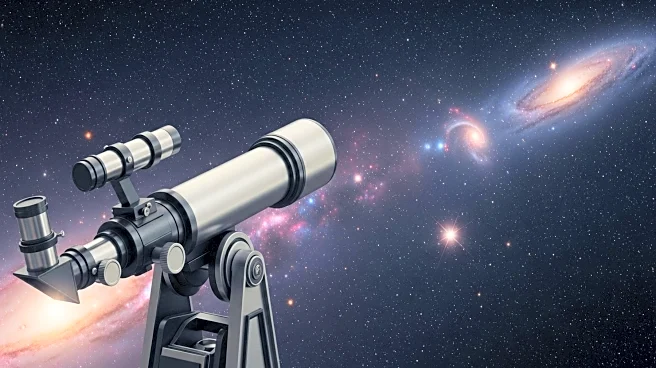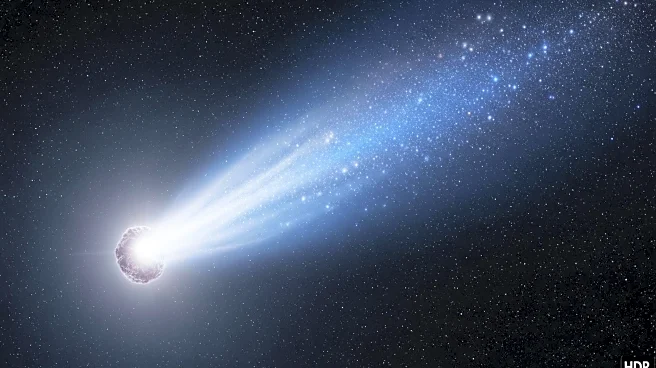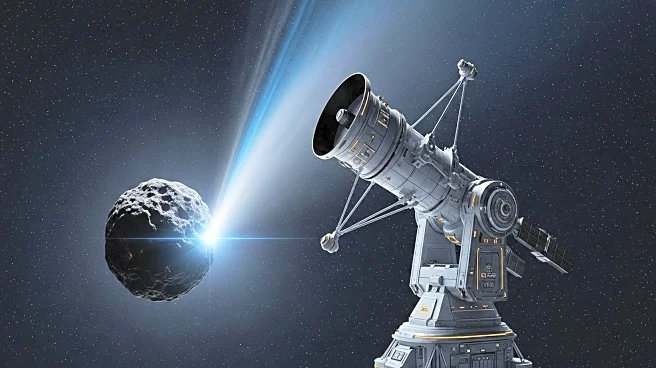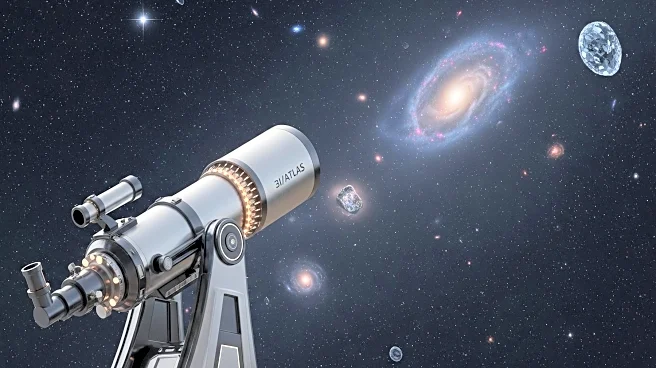What is the story about?
What's Happening?
On August 27, 2025, the Gemini South telescope in Chile captured images of the interstellar object 3I/ATLAS, revealing a teardrop-shaped tail in the anti-Sun direction. The tail, approximately 56,000 kilometers long, is shaped by solar wind and radiation pressure. Observations also detected a carbon dioxide plume around 3I/ATLAS, with significantly lower levels of water and carbon monoxide. The object's mass loss rates suggest a composition unlike typical comets, raising questions about its nature and origin. Spectroscopic data from the Very Large Telescope reported the presence of cyanide and nickel without iron, a signature of industrial production, further complicating the understanding of 3I/ATLAS.
Why It's Important?
The detection of an anti-solar tail and unusual chemical composition in 3I/ATLAS challenges existing theories about interstellar objects. The presence of industrial signatures like nickel without iron suggests potential artificial origins, sparking scientific curiosity and debate. Understanding 3I/ATLAS's nature could provide insights into the formation and behavior of interstellar objects, impacting fields such as astronomy and astrophysics. The findings may also influence future research and exploration strategies, as scientists seek to unravel the mysteries of objects entering our solar system.
What's Next?
As 3I/ATLAS approaches its closest point to the Sun on October 29, 2025, increased solar radiation and wind pressures may reveal more about its composition and origin. Scientists anticipate that the object's enhanced outgassing could provide further clues, potentially leading to breakthroughs in understanding interstellar phenomena. Continued observation and analysis by telescopes like the Gemini South and Webb Telescope will be crucial in uncovering the secrets of 3I/ATLAS.
AI Generated Content
Do you find this article useful?















